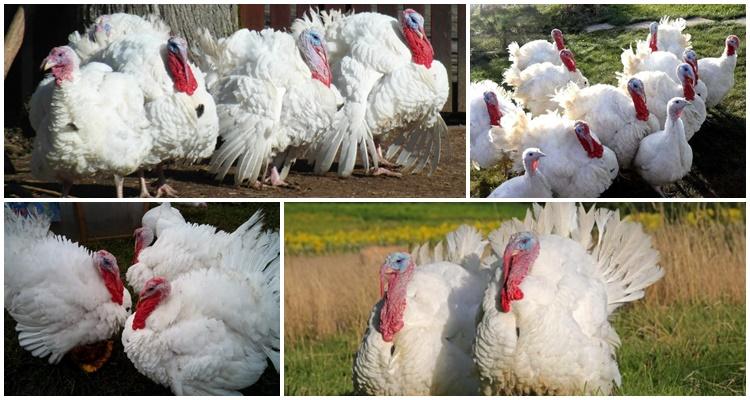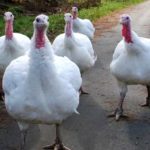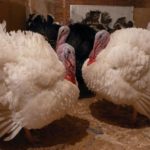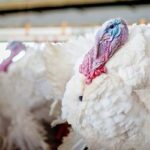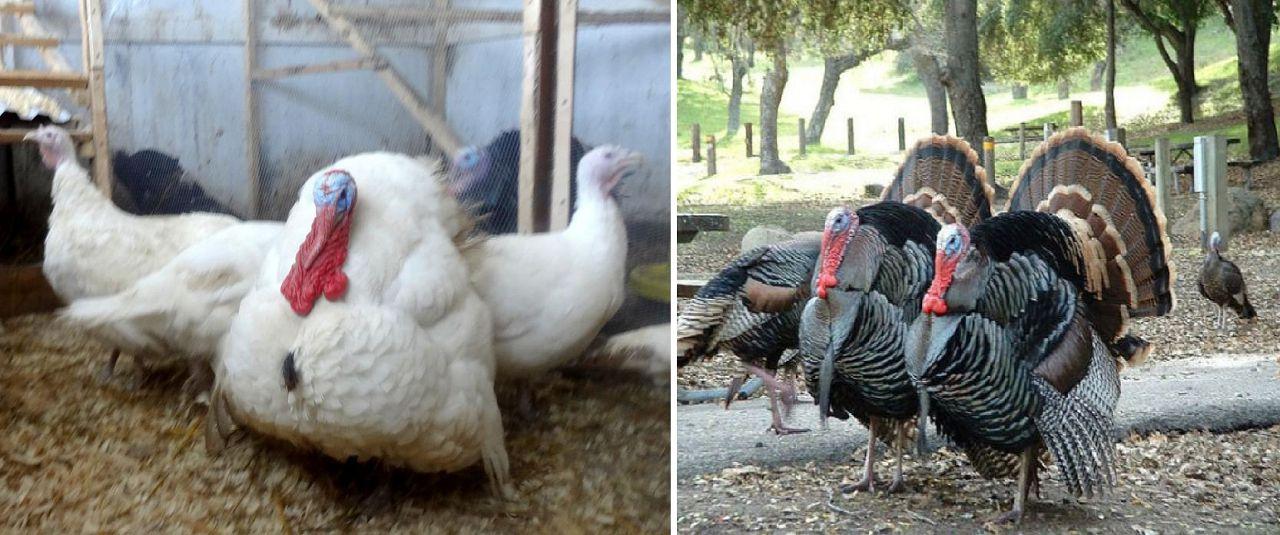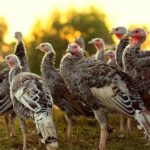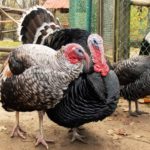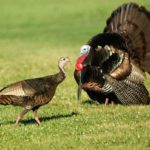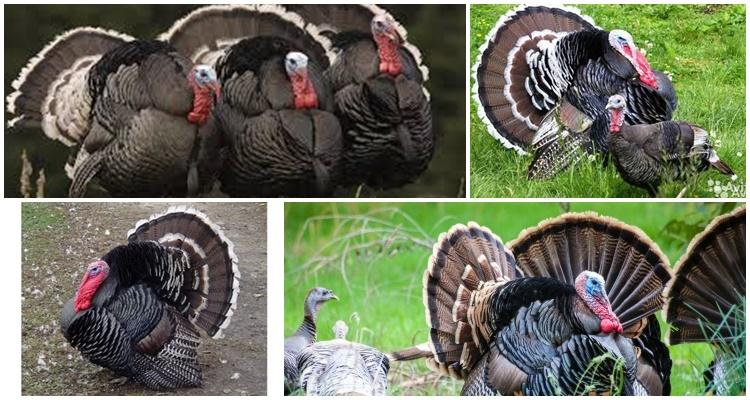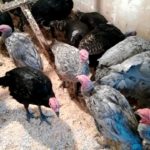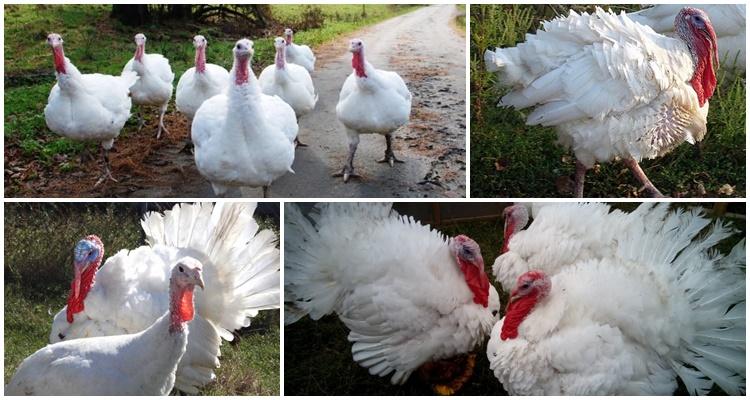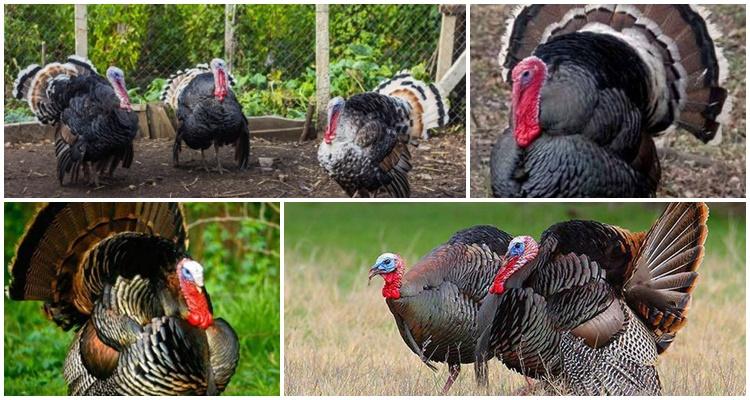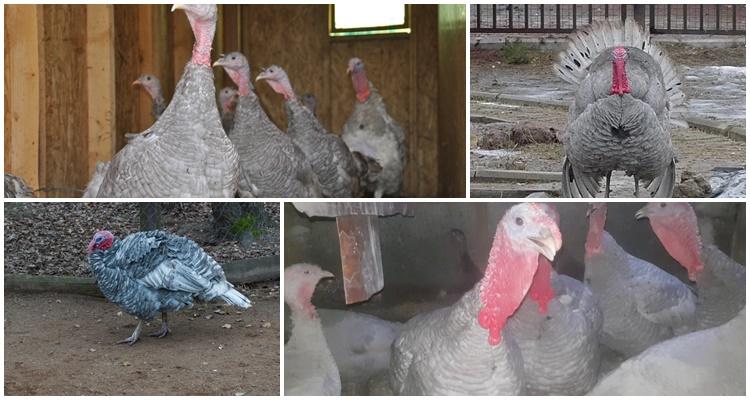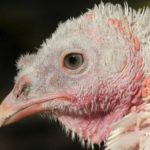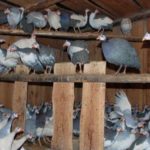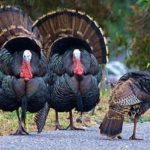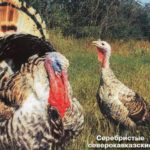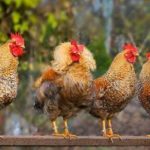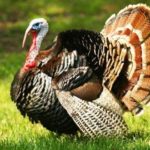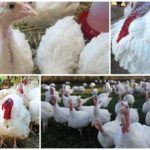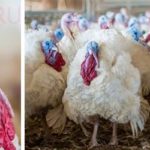Raising turkeys for meat is a profitable additional income for private home owners. There are breeds that quickly gain weight and are easy to care for. On farms, grown-up turkeys are taken for seasonal rearing for meat or hatched at home from eggs from the 1st day of life. For constant breeding, several females and a male are left. In this case, an insulated poultry house and an incubator will be required to keep the birds.
- Features of meat birds
- Choice of meat breed
- Advantages and disadvantages of breeding
- Productivity and purpose
- Requirements for maintenance and care at home
- Room and walk
- Climate
- Wintering of birds
- Puberty and breeding
- Natural
- Incubation
- Secrets of fattening meat
- Turkey poults
- Adults
- Feeding during the breeding period
- Fattening for slaughter
- Is it profitable to raise turkeys for meat?
Features of meat birds
Turkeys are often compared to chickens, ducks and geese. But there are fundamental differences in behavior and content:
- birds become depressed and have attacks of rabies;
- males are twice as heavy as females;
- Meat turkeys have a higher need for a balanced vitamin diet due to rapid weight gain;
- Despite the power and length, the legs are the weak point of meat breeds. For proper development of bones and tarsus, they need movement. Lack of vitamins D3 and B, hypervitaminosis A, dark rooms and dirty bedding lead to leg diseases, oppression of birds and spoilage of meat;
- When breeding, the problem of early mortality arises. Turkey poults do not have enough strength to break through the shell, and young animals sometimes have no appetite;
- The stomach acidity of turkeys is higher than that of chickens. The environment in their digestive tract is favorable for the development of bacteria. Therefore, histomoniasis is typical for birds - inflammation of the stomach and cecum.
The duration of fattening is affected by the puberty of meat turkeys. Females are slaughtered at 17 weeks. Later, fat is deposited in their body, which is necessary for the formation of the yolk in eggs. Males are prepared for slaughter at 20 or 25 weeks of life.
Choice of meat breed
Meat turkeys are divided into three types:
- heavy - weigh 35 kilograms;
- medium - 20 kilograms;
- light - 15 kilograms.
Medium to light weight turkeys can be kept in cages or perches. Heavyweights are fattened only on litter.Early maturing crosses are suitable for fattening. In private farms, the following breeds are chosen for breeding:
- broad-chested white;
- North Caucasian bronze;
- hybrid converter;
- bronze 708.
Suitable for seasonal fattening turkeys cross Big-6. They are fattened no longer than five months. Over the summer, birds gain 10 kilograms. A high rate of weight gain is also observed in Victoria crosses - by the 20th week they weigh 15 kilograms.
Advantages and disadvantages of breeding
Pros of keeping meat turkeys:
- meat and eggs are more expensive than chicken;
- the costs of feed and arrangement of the poultry house are paid off in the first season;
- Forming a turkey family saves money on buying chicks in the spring.
Minuses:
- a veterinarian's permission is required for the sale of products;
- turkey poults require vaccination;
- it is necessary to carefully select the diet for birds;
- weakness of hatchery chicks.
Turkey poults are more sensitive to vitamin deficiencies. Vitamin deficiency results in their illnesses and unsuitability for fattening. But the problem of balanced nutrition for birds is solved with the help of compound feed.
Productivity and purpose
Turkey breeds belong to two agricultural areas:
- egg - from one female they get 110-180 eggs per year, there are 10-15 eggs in the clutch, the weight of turkeys is 7-8 kilograms;
- meat - egg production - 80-100 eggs per year, females weigh 9 kilograms, males - 15-20 kilograms.
Egg breeds are distinguished by early sexual maturation and are ready to lay eggs for the first time at 7 months. Meat turkeys grow quickly, by four months they gain half their weight and are ready for slaughter at six months.
Requirements for maintenance and care at home
Turkeys are considered unpretentious birds.But in the feeding and maintenance of meat breeds there are features associated with the large size and weight of the birds.
Room and walk
Meat turkeys are kept in two ways:
- on the range - birds spend the day on pasture, which allows you to save on feed and get high-quality meat;
- in a cage - provides a short daily walk, requires preparing plant food;
- on the floor - turkeys move freely around the house.
When raising birds year-round, floor and pasture rearing is combined. In winter, meat turkeys are kept in a warm room, and in summer they are released to graze.
Tips for beginners on setting up a poultry house from scratch:
- the optimal temperature for turkeys is +17-22 degrees;
- permissible air humidity is 60 percent. To avoid dampness, the floor of the poultry house is raised 40 centimeters above the ground, and the cracks are sealed;
- You need to maintain fresh air in the room, open a window for ventilation or install a hood. In a stuffy room, ammonia fumes accumulate, poisoning birds;
- the floor is covered with peat, straw or sawdust. In summer, add a thin layer of fine sand or gravel;
- for dry and wet food, hang separate round feeders at the level of the turkey’s head;
- To ensure that the litter remains dry, cup or nipple drinkers are placed - the birds do not spill the water and drink as much as they need;
- for light and medium-weight breeds, perches are installed - horizontal wooden rounded planks are fixed between two walls. Containers are placed under the perches to collect droppings, which are used as fertilizer, as well as dirty litter;
- To hatch chicks, tall cardboard boxes with sawdust on the bottom are placed in the corners - nests for hens.
The cages are placed in 2-3 tiers to make it convenient to clean them and get the birds out.Each cage is equipped with an individual feeder and drinker, which are fixed to the door. For walking, a pen is separated next to the poultry house and fenced with a metal mesh 2.5 meters high.
Climate
Overheating is detrimental to meat turkeys. Therefore, the room temperature cannot be increased above 30 degrees. You need to make a canopy over the paddock and arrange a walking area in the shade of trees. At low temperatures, bird weight gain decreases and feed consumption increases. If the turkey poults are huddled together in a dense flock, it means that the room requires additional heating.
Wintering of birds
Turkeys are kept only in a heated room. Frost and dampness are destructive even for breeds with high immunity.
In winter, the litter is laid in a 30-centimeter layer, loosened every day and changed at least once every 10 days. The daylight hours of birds should last 14 hours, so lamps should be installed in the poultry house for additional lighting in winter.
In sunny weather and light frost, turkeys are released for a walk around the paddock, after removing the snow.
Puberty and breeding
Sexual maturity of meat turkeys occurs at 8-9 months. Heavy breeds require artificial insemination. Medium and light breeds reproduce independently, so they are more often chosen for home breeding. A turkey family consists of ten females and one male. Producers choose a turkey that is equal in size to turkeys.
Natural
One turkey can hatch 15 eggs. Embryos mature within 28 days. Mothers monitor the chicks in the first month of life: they teach them to walk and look for food and water.During this period, it is important to monitor the dryness of the litter and the warmth in the house. Chicks are sensitive to drafts.
Incubation
To hatch chicks in an incubator, large, smooth, regularly shaped eggs are selected. Turkey poults also appear 28 days later. But they begin to hatch on the 25th day. If it is difficult for them to break through to the light, pieces of the shell are broken off with tweezers, being careful not to injure the chick.
In the incubator in the first days the heat is set to 37.8 degrees, in the middle of the period it is reduced to 37.5 degrees. By the 25th day, the temperature is maintained at 35 degrees. The hatched chicks are placed in cardboard boxes with straw and kept in a warm room at a temperature of +30 degrees.
Secrets of fattening meat
The basis of the diet of meat turkeys is cereals, boiled vegetables and herbs. The proportion of components in the diet is increased or decreased for birds of different ages and purposes.
Turkey poults
Feeding chicks from the first days lays the foundation for their healthy development. In the first two days, turkey poults are fed a boiled egg, mashed in cottage cheese with wheat porridge. Then wet mixtures are prepared from meat or fish broth with the addition of soybean meal, eggs and cottage cheese.
From the first month of life, the bird's diet includes cereals, boiled potatoes and carrots. The percentage of components is shown in the table:
| Product | Percentage by age | |
| 1-2 months | 2-4 months | |
| Corn | 37 | 40 |
| Wheat | – | 18 |
| Peas | 7 | – |
| Soybean meal | 9 | 9 |
| Feed yeast | 3,5 | 5 |
| Meat and bone meal | 8 | 5 |
| Skimmed milk powder or milk | 5 | – |
| Grass (alfalfa) meal | 3 | 5 |
Turkey poults are given salt as a mineral supplement. Birds also need crushed shells to replace the hard shells of insects and snails.
Adults
The basis of the diet of meat turkeys is wheat, barley and oats, as well as succulent grass and vegetables. In the wild, birds ate insects, snails, plant seeds, grains and weeds. They like the bitterness of wormwood, yarrow and gentian, and beech cones are a delicacy.
Bitter plants and hard beetle shells reduce stomach acidity and stimulate appetite, which sometimes disappears in birds kept indoors. The secret to a healthy appetite in adult turkeys is spices in the diet. Pepper, green and onions, garlic, ginger, cinnamon, and anise have a beneficial effect on the mood of birds. The meat of turkeys that have spent the summer on pasture has a more beautiful color and good taste.
Feeding during the breeding period
Cottage cheese, fish and meat and bone meal are added to the diet of turkeys before egg laying to saturate the body with calcium. Otherwise, due to microelement deficiency, the formation of egg shells will be disrupted or laying hens will peck at them.
Male breeders are not fattened, so they are given less barley. The emphasis is on juicy green food and boiled root vegetables - sources of vitamins.
Fattening for slaughter
The peculiarity of the nutrition of meat turkeys is the concentrated content of nutrients that promote weight gain.
Intensive fattening is carried out from the age of four months. The bulk of the diet consists of barley, oats, wheat and corn. When grazing on pastures, preference is given to alfalfa fields or the crop is planted in a walking area.
Is it profitable to raise turkeys for meat?
Selling home-produced turkey meat is considered a profitable enterprise for the following reasons:
- meat is in demand due to its beneficial properties;
- additional income comes from the sale of eggs.
To gain experience, novice breeders are recommended to start by purchasing twenty chicks and seasonally raising them for slaughter. Proceeds from the sale of the first batch of meat will be used to purchase new birds next year.
When raising a second shift of turkeys, you can correct errors in feeding and maintenance, and in the fall you can leave several females and a male for breeding. With a gradual increase in livestock and proper maintenance, income will also increase.

